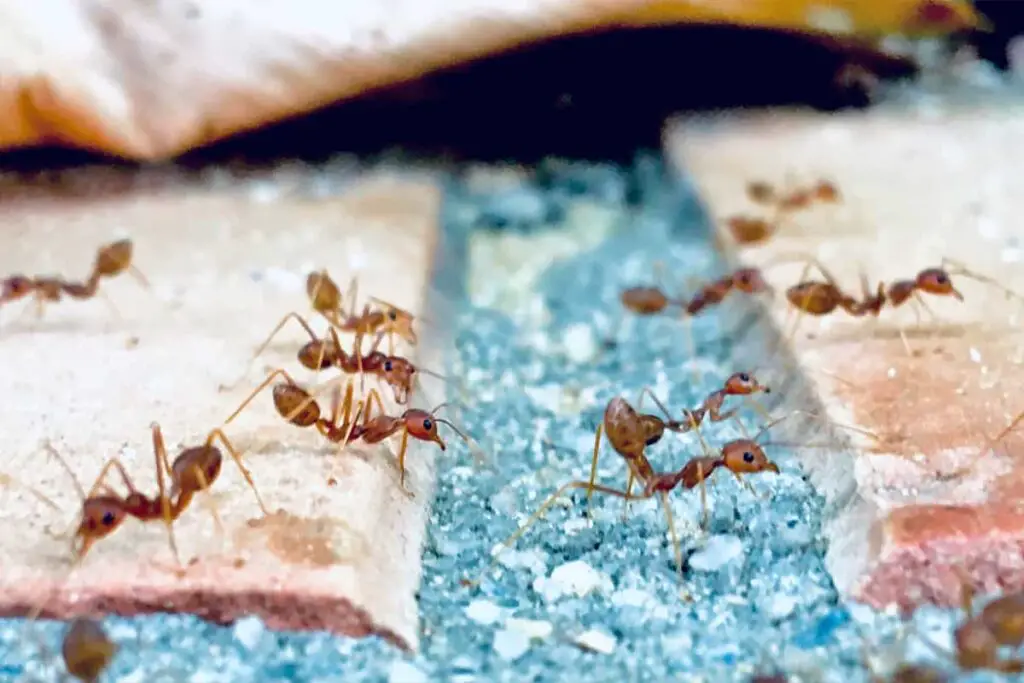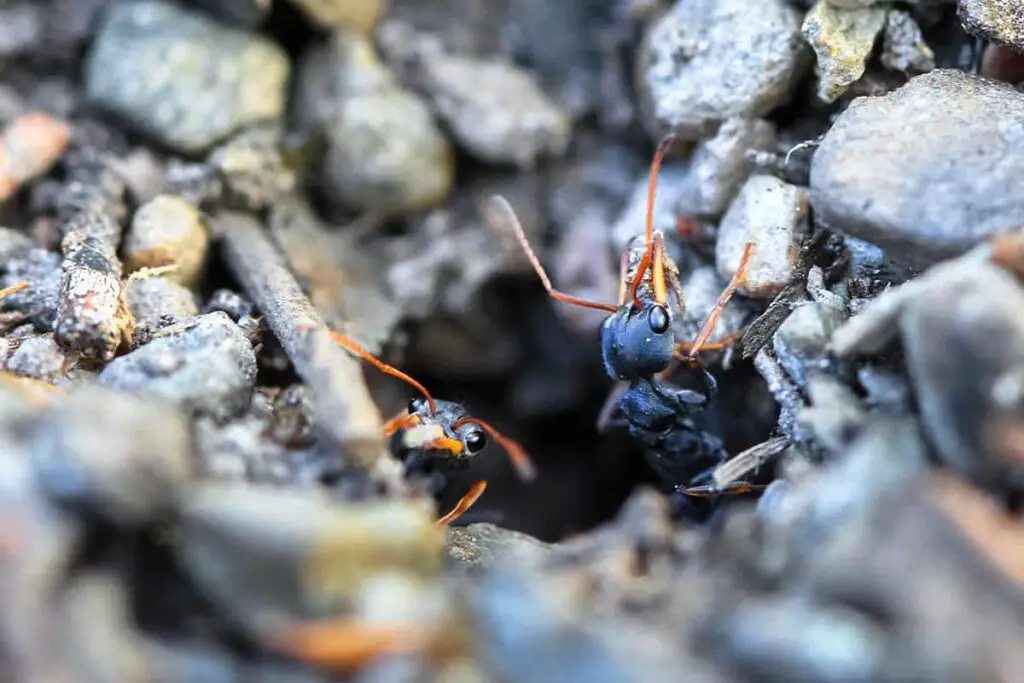When tackling the question of whether sand attracts ants, it’s essential to consider the behaviors and preferences of ants. Ants aren’t directly attracted to sand as a food source but are often found in sandy environments. Your curiosity may stem from the fact that sand is present in many outdoor locations, such as playgrounds, gardens, and potted plants, where ants are also commonly observed.
The link between sand and ant activities connects more to the texture and the ease with which ants can burrow and create their colonies rather than the sand itself being an attractant. The granular nature of sand allows for better drainage and easier digging, making it an ideal place for ants to set up their homes. This makes your sandy spaces potential hotspots for ant activity, especially if other conditions favorable to ants are present.
However, it’s not the sand itself that’s bringing the ants to your yard or construction site but rather the protection and environmental conditions it provides. Certain types of ants are indeed attracted to sharp sand due to its utility in building their nests, as suggested by an intriguing postulation about sharp sand potentially attracting ants, but it’s vital to recognize that food sources and moisture play far more significant roles in ant attraction.
Ant Behavior and Sand
Understanding how ants interact with sand can help you better manage your space. Sand provides different opportunities and challenges for these industrious insects.
Attraction Factors
Sand composition: Certain types of sand can attract ants, particularly when the grains have sharp edges, which can be harmful to them. Ants may be drawn to wounded comrades since the leaking fluids signal a potential food source.
Food sources: Ants are particularly fond of the sugars found in spillage. When sand traps these substances, it becomes a greater attraction for ants seeking food.
Habitat Preferences
Nesting: Ants often prefer sand for nesting because it’s easier to excavate compared to denser soils. This preference makes sand an ideal material for them to establish their colonies.
Temperature and moisture: The condition of the sand, in terms of moisture and temperature, will also affect its attractiveness to ants. They prefer locations that support their need for humidity and warmth.
Sand Types and Ant Responses
Understanding how different sand types affect ant behavior is crucial when you’re investigating whether sand attracts ants.
Grain Size Relevance
The size of sand grains plays a significant role in the kind of environment it creates for ants. Larger grains can be harder for ants to move, but they often provide more air pockets and space which can be ideal for some ant species to build their tunnels. In contrast, smaller grains might be easier to manipulate but can lead to more compacted structures, impacting the ants’ ability to construct their nests. For example, ants prefer a certain grain size for nesting, and wet sand has a higher angle of repose than dry sand, affecting how ants will interact and shape it for their colonies.
Chemical Composition Effects
The chemical makeup of sand can attract or repel ants. Ants are often drawn to minerals in the sand that can be found near their food sources. Moreover, the presence of certain organic compounds within the sand might influence ants to either set up a nest or search elsewhere for a more suitable habitat. For instance, some sand-dwelling ants might be attracted to specific chemicals that align with their biological requirements.
Human Factors Influencing Ants and Sand
Your actions have a significant impact on the behavior and distribution of ants in sandy environments. Specifically, landscaping choices and the proximity of food sources can alter ant populations and their interaction with sand.
Landscaping Choices
When you select certain plants for your garden or decide how to arrange your outdoor space, you’re affecting the local ecosystem. For example:
- Plant Selection: Choosing plants that thrive in sandy soil can inadvertently support ant populations, since sand makes it easier for ants to excavate and build their colonies.
- Mulch Use: Utilizing mulch can provide shelter for ants and encourage them to settle in your sandy yard.
Food Source Proximity
Ants are drawn to areas where food is abundant. Your habits can turn a sandy patch into an ant hotspot:
- Crumbs and Waste: Leaving food remnants or unsecured garbage near sandy areas can attract ants.
- Pet Foods: Outdoor feeding areas for pets can also be a significant attractant for ants.
By understanding how your choices influence ants, you can manage your sandy spaces to either deter or accommodate these industrious insects.
Frequently Asked Questions
In this section, you’ll find answers to some common curiosities about ants and their interaction with sand. Whether in your home or backyard, understanding these aspects can help you address ant issues more effectively.
What leads to ants creating piles in sandy indoor areas?
Ants often construct piles in sandy areas inside buildings due to the easy-to-maneuver texture of sand that facilitates their tunneling and nest-building activities.
How does cinnamon affect ants in the context of sandboxes?
Cinnamon is a natural ant repellent; mixing ground cinnamon powder into sandbox sand can deter ants due to its scent, which they find unattractive.
Can a sandbox serve as an environment for antlion habitats?
Yes, sandboxes can serve as suitable environments for antlions, as these insects prefer lose, sandy soil where they can easily dig pits to trap their prey, which often includes ants.
Are there specific species of ants that prefer nesting in sandy soils?
Certain ant species, such as Western Harvester ants, show a preference for nesting in sandy soils, as this environment supports their tunneling behavior.
What conditions make sandy soil prone to ant infestations?
Sandy soil becomes prone to ant infestations when it’s dry and easy to excavate; coupled with food sources, such as sweet residues or honeydew-producing insects, the conditions become ideal for ants.
Does the texture of sand influence ant activity regarding nest construction?
The texture of sand can significantly influence ant activity; sharper sand grains can deter ants, while finer grains are often preferred for ease of construction and tunnel stability.
Driven by a passion for those tiny creatures that rule our world, we at Bug Domain strive to be your go-to resource for information on insects.




